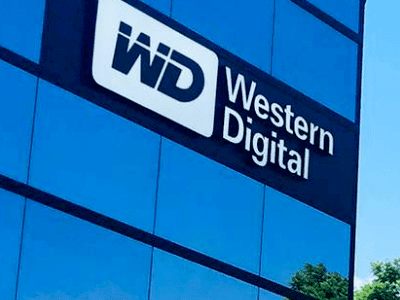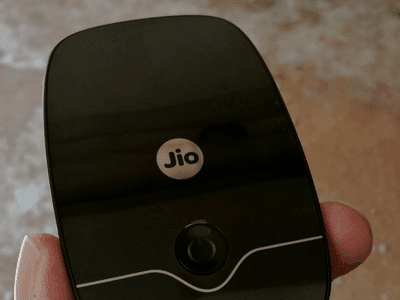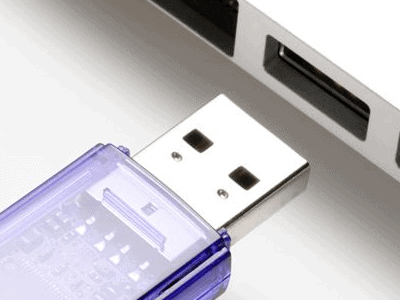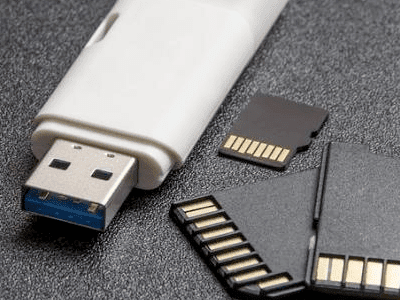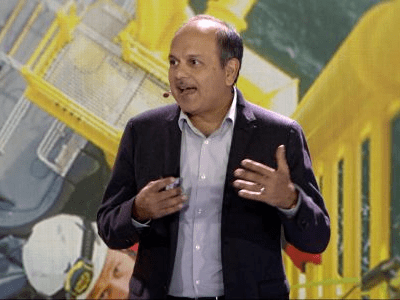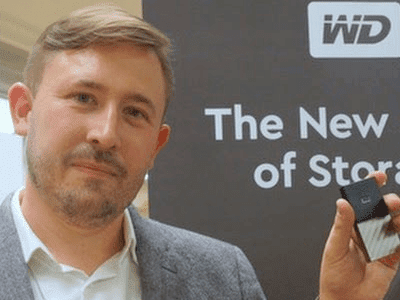In Conversation with Vivek Tyagi, Senior Director, Enterprise Sales – Western Digital
Share This Post
Vivek Tyagi is the Director of Business Development for Embedded and Enterprise business at Western Digital in India. He is responsible for building a strong customer base for OEM & Enterprise Storage within India with a key thrust on application acceleration. Vivek comes over 2 decades of industry experience in sales and marketing. Prior to Western Digital and SanDisk, Vivek has been pivotal to Sales and Business Development initiatives within India for Freescale, Motorola and Philips.
Shipra Sinha, Analyst – Industry Intelligence Group, CMR sat down with him for a freewheeling discussion on the upcoming technologies and WDCs future roadmap.
What are the technologies that will have the maximum impact in the year ahead?

Vivek: From Western Digital perspective, we are more focused on two areas. One is technologies that impact hard disk drive industry and technology that impact flash drive industry because those are the two products we are doing. Flash coming from SanDisk acquisition and WD is doing the hard drive. It’s a world of data we all know is changing and ever expanding, whether it’s a consumer storage or enterprise storage. Now in that context, we keep seeing how the other technologies are impacting world of storage, and then what we need to do to respond to that demand. So, big data for sure is a big buzzword happening everywhere and big data is related to storage as well.
On the hard drive side, what we’re seeing is that because of emergence of AI and analytics, most corporations are not willing to throw any bit of data, because they can’t predict whether this will be required to run any analytics in the future or not, because of that, storage demand is growing. Whether it’s through cloud service provider it does not matter but storage demand is growing. And to keep this data for long time as a backup data to run analytics later is growing rapidly. But since we are not using this data all the time, companies are asking us or cloud service providers are asking us how can I keep it in a more cost-effective way. That leads to requirement for higher and higher capacity of hard drives at lower and lower cost. Reduce the total cost of acquisition but at the same time increase the capacity you should be able to keep larger data in smaller footprint, smaller space with a lower cost. So, it is our endeavour as a company in the technology side to develop higher capacity drives in the same form factor at the lower cost. From that perspective, we announced an initiative that right now is shipping 14TB of hard drive for data centre and we said we are skipping 16 and we’re straight away sampling 18TB and then 20TB drives and by middle of next year these drives will be in the mass production. That’s on the hard drive side.
On the flash side, we moved about 18 months back to 3D NAND. Right now we are shipping 96 layer of 3D NAND. When we talk about layer it’s basically stacking those 3D NAND cell one on top of the other to increase the density in a smaller space. Again, the whole goal is to reduce costs and increase the capacity. Flash industry two years back switched from 2D design of NAND flash cell to 3D. So, you’re able to stack these cell or flash cell in one on top of the other. Industry started with 24 and 48 layers of flash and now we’re shipping 96 layers. Next, we will be moving to 112 and 124 layer of NAND Flash, that’s one major technological change that’s taking place. Basically, what it allows us is to the NAND flash basic chip will be much higher density at a lower cost. If you need an SSD for your laptop to be 2TB or 4TB or you need an SSD in data centre to be 15TB and still has to be cost effective then this is the way to do it, unless we make those higher density NAND flash it is not going to be practical. So, this is one side of technology in storage.
The other thing in storage is ultimately the storage device whether it’s a hard drive or whether it’s a flash drive, it has to talk to the processor in a computer or server right then only the whole thing is compatible. So, this talks to computer CPU on certain well-defined industry interfaces. In the past it was SATA then came SAS interface, the latest interface is NVMe. Its over PCIe bus but protocol is non-volatile memory express. It’s not evolved in the hard drive because hard drive is slower so SAS interface is sufficient for hard drive to communicate data. But flash is becoming faster and faster, higher density but SATA limits that communication speed to six gigabit per second. SAS is 12 gigabit per second but still flash can even talk faster. So, industry evolved a new interface over PCIe as you know, called NVMe.
NVMe can provide more bits across to the CPU. NVMe now both in the data centre and server side we are seeing is kind of replacing SATA as interface. NVMe is a new focus for us to make SSDs for data centre or server using the NVMe PCIe standard. With that thing in mind, we actually released a product called aspen plus just a couple of weeks ago, it’s an internal project name called aspen plus but we have more part number and other details we can share with you. Aspen plus device offers 450000 Iops(input output operations per second) from the SSD and most SATA SSDs were limited to less than one lakh operations and early next year, we are also moving to a new generation of NVMe SSD for data centre that will be going up to eight lakh operations or eight lakh Iops basically for super high performance application. Again, in storage there are big data application where you keep large data and low cost for long period of time there are other applications where you need performance and you’re not looking large data but small data we call it fast data. I think good example is databases like Oracle, SAP or applications like ecommerce companies are running web-based business. If that web page is loading very slowly then you lose patience as a customer to be on that website to book to buy anything or book a ticket or anything any transaction. These applications are called online transaction processing or OLTP application. OLTP application looking for high input output operations, high performance and low latency. Latency is a time taken for a task to complete basically how quickly it can do. So, I think high performance NVMe is the technology that we are focused as a storage company and storage industry for OLTP applications.
What is the definition of AI according to Western Digital? How do you leverage that?
Vivek: AI is evolving, it can do more and more jobs. AI is also very related to big data. When you have large amount of data and your software has some level of intelligence built into it then it can find some patterns in that big data and present that to you as an analytical output for which you can make some decisions. You know, how trends are what’s going on, whether it’s related to stock market, or healthcare industry, or ecommerce, AI is clearly a trend that’s going on in the world how it is impacting storage is more relevant to us.
AI will be more effective if there’s larger data set available for it to see the patterns. Intelligence of computer will be always more predictive or more perfect or when it can see through larger amount of data for example, we do market survey of USB or micro SD card. If we talked to 100 customers will get certain outputs. It may not be near perfect because we met a very small sample size but if we talk to one lakh customers and they say the same thing, then you will say my results are more refined. Same way for AI to be more refined, it has to run on a larger number of data sets. As AI is evolving, it’s causing need for keeping larger and larger data and that means there is a need for larger and larger storage. That’s basically AI for storage.
The next level of AI is deep learning. Larger and larger data you have, more patterns a computer can learn by itself and that’s nothing but deep learning and make decisions on it. Again, both the trends are very relevant for storage. That means more storage demand and you don’t want to throw away data if it is not making sense to you today, it might make sense out of this pattern tomorrow. So, that’s my take on this, it is definitely a good trend for storage because more storage will be required.
What is your take on 5G? What do you think of its integration in India? What plans has WDC made for the data explosion expected by 5G?
Vivek: You know, 2g, 3g and 4g were evolutionary technologies like they evolved over previous that they increase the bandwidth little bit. Every successive generation had a slightly better bandwidth than the previous one in terms of data but 5G are the kind of data bandwidth they’re talking up to 100 gigabit per second, etc, it’s really revolutionary technology, not evolutionary technology.
Now again, we don’t play per se in the 5G Wireless side of the things that will be more other companies and then telcos will really deploy it for customers but again we have to see how it impacts the storage industry. The first thing is 5G will provide higher and higher bandwidth. Secondly it will provide lower and lower latency. Now today, biggest consumer sought after item on a wireless network, home TV Wi Fi or mobile network is video. People are consuming more and more video. Like even Netflix or those kind of things at home. It looks like video is one big application that we as a consumer have latched onto. Now for a movie to download on a mobile phone is fairly painful in Indian context of 4G. So, 5G since its revolutionary it can go up to 50 or 100 Gbps kind of bandwidth, you will be able to decide before boarding a flight or in any other situation you will be able to within 10 seconds probably download a movie. What it means is if you have more bandwidth at a less time you will be downloading more videos into your smartphone and devices that means more and more storage in terms of flash in the devices.
Similarly, in the data centres of these companies, so called companies which are streaming video company, streaming media company, they would also will be increasing their storage dramatically but they would need more high-performance storage because they have to stream video to millions of customers now. That means more and more demand for storage but more and more demand for high performance storage because 5G is low latency and high bandwidth technology. This will be more impacting the edge storage when I say edge, if you take a network, another thing could be IP cameras or video surveillance, smartphone is another application, then your smart TVs at home could be another application they may come pre built with 5G technology. So, I think the demand for both storage and performance computing at edge devices will dramatically go up, which is again a positive impact for company like us and others like us.
If you look at our roadmap for embedded flash memory devices, for internal flash memory devices for smartphones, we have evolved our interface just like in SSD we have evolved interface from SATA to NVMe. In this side, the interface has evolved from something called EMMC to UFS.UFS actually more than doubles the bandwidth of flash memory chip to the CPU in the smartphone. So that’s an industry interface, we are defining new products. Secondly, the capacity so it’s always about performance and capacity for us. Performance wise, we are moving our roadmap for embedded flash memory chips from EMMC to UFS. We’re tripling the performance there. On the capacity side now we have announced the roadmap for next year up to 512 gigabytes of internal storage device. Right now, we are already shipping to 256 gigabyte devices for smartphone and other application, but eventually it will be going to 512 gigabytes.
In smartphones it’s not always internal storage, people are also looking for external or removable storage, which is micro SD card. We already announced a 1TB micro SD card. I think that will be hugely beneficial to 5G whenever it comes. As you can see in some part of the world like Korea and other parts, their trials are already on but the real deployment probably will start in second half of 2020. India, I feel will be probably six months or a year behind because we have not yet started spectrum allocation or licencing, etc. So, it may start in second half of 2020 but the real year probably is 2021 in my opinion for 5G deployments.
What is cloud storage meant for WDC and how do you leverage that?
Vivek: Until five, six years back, every customer had their own data centre setup by themselves. So, it was very practical for large enterprises but for small and medium businesses, it was not practical. They had to pay through their nose to storage server OEM for maintenance and support for five years. That’s how the emergence of cloud service provider, a lot of SMB moved to the cloud. There’s no doubt cloud is still a big trend, it’s a big growth trend. But when we talk to large enterprises, they are clearly now following a hybrid cloud strategy. That means part of their data stays on public cloud and part of their data stays with themselves. Because one thing about cloud is putting data is cheaper there, but downloading your own data from Cloud costs, because you have to pay for the network bandwidth. Now the large enterprises have realised that they are doing so much more analytics, that it’s important for them to keep some data whatever it is, which they need frequently. They need to access frequently in their own premises.
Clearly, I think the hybrid cloud is the trend in the world that we are seeing and in India and for large enterprises for whom data is their gold or oil or money, they are trying to keep this data now back from public cloud to their own premises. Not all but some of them. I’ll give an example of ecommerce company for them all the consumer data, you came you browse the website, you looked at few things but you didn’t buy that’s critical data for them to send you an attractive offer to call you back to their website. Now they need to keep this data every day they need to keep running analytics on this very often. So, I think these kinds of companies which are in the internet related business for them data is most critical. We are seeing if they are small companies, they are going to cloud but if they are larger companies, they are actually keeping the data with them, they’re building private cloud.
Five years back, our biggest customers were server and storage OEMs, like HP, IBM, Dell EMC, because they were buying all the hard drive and flash drive from us. They were making server and storage and selling it to the customers. Then came the cloud service providers, Amazon, Microsoft, Azure, Google and likes of those. Now these guys don’t buy any branded server and branded storage, they build everything themselves. Because their scale is so large, by building themselves they can save 10 or 20% of the cost, it’s a huge impact to them. So, we are directly doing business with cloud service providers by providing flash drives and hard drives to them for their cloud build out. Better they do better we do. It’s a positive trend to us. We ourselves are not in a cloud service and don’t know, don’t plans to be in that business right now. Because then we will be directly competing with our own large customers. Nobody wants to do that. But cloud is a positive trend for us and we are working with all the leading cloud service provider globally. Also, Indian cloud service provider to provide them some form of storage, whether it’s hard drive or flash drive for their cloud build outs.
What is your definition of smart cities and smart homes and what role will WDC play in building them?
Vivek: My definition is simple for smart city. I’m a consumer I need to deal with government for various services. I need to make licence, I need to make passport, I need to get electricity, I need to get water, I need to complain about it, I need to pay the bills, I need the security safety deal with police. So, my definition is simple, citizen to government services if they are digitized, they are online and there is platform built by city municipalities to do it, then it’s smart city for me. If I’m living in a city where I can deal online with everything related to government, I don’t have to bribe people I don’t have to stand in the queue, then it’s a smart city for me. It’s a long call it is not going to be there but right now whatever tenders are coming up for smart city they’re also talking about, smart garbage collection, number of things, etc.
The most important trend for WD again, related to storage is video surveillance aspect of the Smart City. For smart policing, for smart traffic policing, for smart online challan and all those things, in all the Smart City tenders one major aspect is to put as much cameras as possible to have the smart policing. Now, another interesting statistic is, India has 140 policemen per one lack of citizens in big cities. It’s very low compared to many other developed countries. It’s very, very low. Actually, Video Surveillance or CCTV as a technology can fill that gap in this smart city perspective. You don’t have enough policeman and we have lot of population then you put more and more cameras so there’s no argument then once you have a video that you jumped at red light, or you burgle this ATM machine, there’s no argument about straightaway you can find people and people will also realise they’re getting monitored.
It’s again very positive trend for us because video among all the things occupies maximum storage and more cameras you put more video surveillance you put more and more storage would be required and you have to keep it all the video footage for 30 to 180 days depending on what your needs are in the city. We are seeing that trend and we are working with some of the leading system integrators. Luckily now with the combination of Western Digital and SanDisk, we have all kind of storage for the video surveillance, the micro SD card for IP camera, then we have purple drives for those NVR DVRs and then we have storage platform for the centralised storage. So that’s my take on that.
What is the product roadmap of WDC for next year?
Vivek: On the data centre hard drive side, we will be launching 18 and 20 terabyte drives that will be highest capacities of its kind. On the performance side, NVMe flash drive we are planning a new drive sometime announcement in the first quarter that would go close to a million Iops like 800,000 to be precise. You also know on the consumer side we have these mobile key pendrive campaign running in India to create more awareness about how to take your photos and pictures when the camera memory is full to your laptops and also we are doing some client device SSD specially for the gaming type of desktop and laptop application. So, client SSD then enterprises SSDs, NVMe and the data centre hard drives, those are some of the major product focus in terms of early next year.
How do you see 2020 in terms of revenue?
Vivek: We don’t state the revenue publicly. But I just want to share with you that flash memory, it’s a public information, flash memory had a price erosion in 2019. I’m referring to a report that came out last week from a research company called forward insights. Forward insights are predicting that flash average selling price will go up by 25% in 2020, on a count of 4 to 5% shortfall in the supply versus the demand. That’s the prediction from this company. So, we are hoping that if not that high percentage they are stating but if there’s a positive demand surge on the flash and pricing surge, I think that will be a good trend for us for sure. And overall will basically help us to boost increase our revenues in context of currently depressed flash pricing. But from the Smart City video surveillance, from some of the consumer flash device and data centre side, we are expecting overall demand increase in India next year and we are also considering to add headcount in the sales and marketing next year. There’s no new r&d centre, we will continue to have this and we will continue to expand this centre. Each year we are hiring fresh college graduates into r&d centres, about hundred every year. So, I think that momentum is continuing.
With the availability of huge internal memory smartphones. What is the future of Micro SD market?
Vivek: Definitely, with the advent of cloud and more internal storage, we have seen slowness or sluggishness in MicroSD market for sure. But I feel by later of 2020, early 2021 once the 5G handsets starts coming in, and then people have ability to download a lot of higher definition videos and movies before getting onto planes and things like that. I feel people will again, start seeing demand for additional storage in their phone to keep these videos because it’s also easily transferable format of memory. I think it is probably here to stay with 5G coming in. We should see some spike, the volume overall may go down but the high capacity mix will improve, the demand for high capacity micro SD cards will improve. Also we are seeing the new surge of micro SD card demand in the IP video surveillance cameras side and some specialised applications in automotive where you are having this dash cam or in the truck side they’re putting some assist camera where they’re streaming the video of driver and outside continuously and they are running analytics on this and sending alerts to the driver. Those type of application there is also micro SD card to store the videos inside. So, some new applications are emerging and, in the phone, 5G may again push and increase the lifetime of Micro SD card.
With SSDs replacing HDDs currently. What’s your take on future of HDD market?
Vivek: So, SSD is certainly taking over the laptop and desktop but in the data centre we’re seeing very strong demand for hard drives. As I said Big Data need to be kept for a long period of time is not cost effective to keep it on SSD because it’s still four to five times more expensive than hard drive. In fact, five years or 10 years back many analysts predicted the death of tape drives in the data centre. Tape drive is still alive five years back when we were in SanDisk, we heard HDD may be dead, but we are seeing strong demand on hard drive from data centre. I think it is still many years away before I can predict.
On the consumer side it’s a decline but today 256GB SSD is of the same price as 1TB of hard drive. So, in a corporate laptop where productivity instant on battery life is very critical, SSDs are replacing. They say we don’t need 1 TB hard drive I’m okay with 256 GB SSD. In the consumer environment at home a laptop environment where you’re storing lot of movies, videos, pictures and things like that and the productivity is not the first priority but price and size is more priority, people are still buying 1TB,2TB hard drive but trend is clearly towards SSDs.




